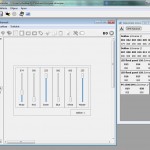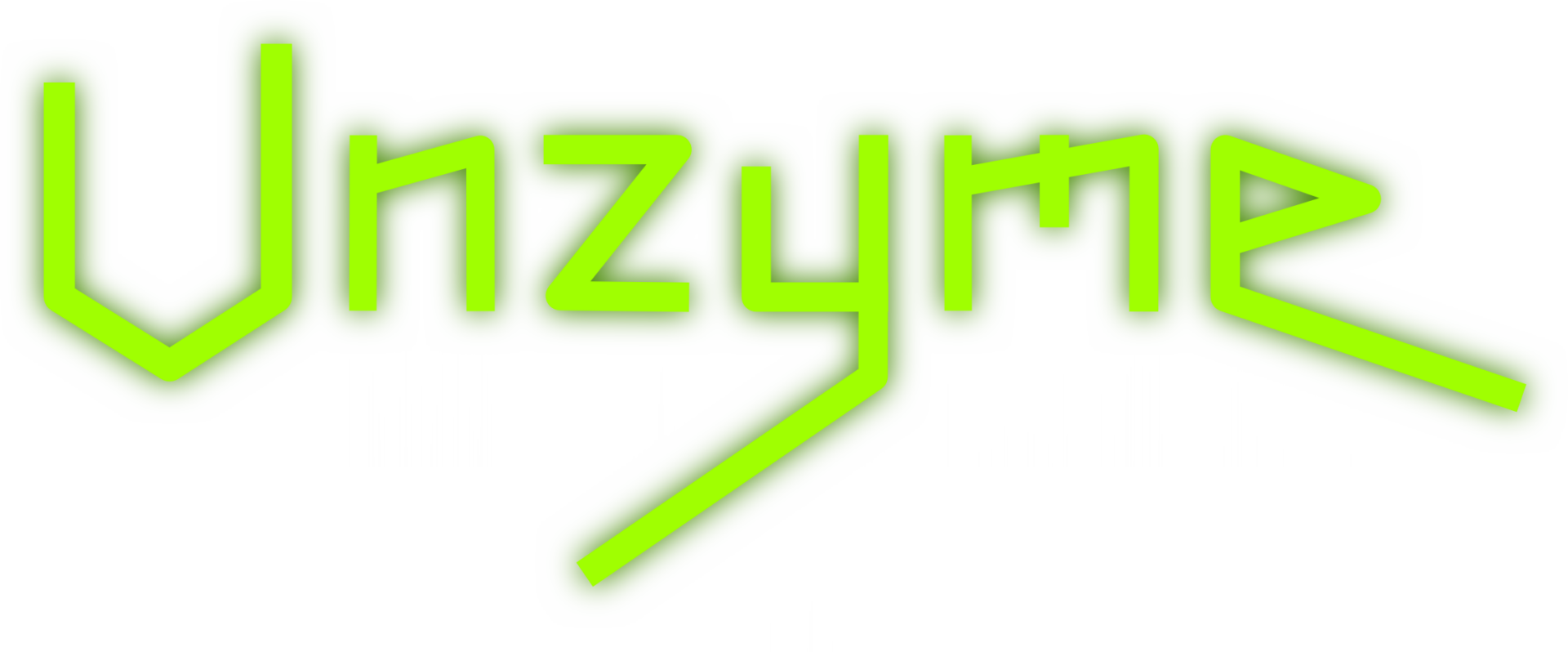The long-awaited package from Thomann arrived to the Unzyme test facilites about a week ago. The package included two American DJ Dekkers, two Stairville Led Floodlight 150s, a Stairville 1500 strobe and the SF-1000 fog machine from the same manufacturer, a bunch of DMX cables (aka XLR cables) and an Enttec USB DMX converter. Oh, and 15 litres of fog fluid. That should last a while. Buahaha.
Testing the setup with sound detection.
After reviewing several commercial and open source DMX controller software, we decided to go for the free (and Finnish!), Q Light Controller (QLC). Our goal was to link Ableton Live to QLC via a virtual midi port and relay the commands through the Enttec dongle to the lighting equipment. As we know from experience, doing something like this usually screams for failure. However, the first test was an absolute success. After setting up the fixtures in QLC (by referring to the channel codes in the lights’ manuals), we tested the setup with QLC’s virtual console – and hurray, it’s alive!

Now it was time to add another link to the chain, the infamous midi connection. As the virtual port we used Loopbe1, which is made by nerds from Germany (at least according to their website’s address). We had to use Loopbe1 for the sole reason of running the tests with a PC – when using a Mac you can easily setup midi ports straight from OSX’s preferences. Now, in Live we made a new midi track, whose output was assigned to this virtual midi port (after applying the port in Live’s settings of course!). Notice you must leave the track empty of any instruments or effects; as soon as you do this, the possibility of outputting the signal disappears. In QLC we had to fiddle with some settings to get the signal to come through. Defining which signals were to govern which attributes was easy by using the learn-function in QLC’s input manager. Using a midi clip in Ableton Live to rotate a physical motor in a lighting fixture and to alternate color intensities with envelopes for the first time was… well, just fucking awesome. You never expect these red rectangles, which you’ve been using for mere sound production (not to say sound waves aren’t physical) to actually DO something in the real world. I’ve begun planning a race car based on midi velocity envelopes. Anyway, enough for the enthusiastic philosophy. All was ruined in the end. The next time we plugged the system in, the Enttec dongle signed itself off after spontaneously firing a few leds. We hear the Enttec Open USB dongle doesn’t have surge protection and suppose this is probably what caused the failure. I have no idea what could’ve been done differently to prevent the problem (yes, the PC was grounded – so were the lights).
This sucks on many levels. First, we can’t provide a customized light show for our upcoming gig in Helsinki (there’s no time, since it’s hard to find these dongles in Finland!). Second, we’ll have to invest in a more expensive DMX-USB dongle (most likely Enttec USB Pro, with surge protection!). We’ll see what the nice people at Thomann have to say about this.
After ranting about the converter, it’s time to say a few good words about the lighting fixtures. Well, actually bad. But I’ll be quick. Then I’ll say something nice. The bad news is that the other Dekker had a broken motor, which resulted in static lights. Since we don’t like static (except the one seen analogue TVs – it’s got traces of the big bang on it! So cool…) we had to return it to Thomann. Still waiting for a replacement. And now for the good news. The Dekker, the one which is functional, is freaking awesome! So is the fog machine and the strobe and the flood lights (which get extra kudos for being so damn cheap!). I filled my apartment with so much smoke the fire alarm went off. Thankfully the batteries ran out the second it began to scream. Which reminds me…
In other news, Joona just got a new MacBook Pro. I hope we get rid of some of the performance trouble we’ve been having in Live situations. Ramming all the songs in one Live file has its toll (read more here).
Tomorrow we’ll start shooting a music video for a new kick-ass song called The Game is On. The scenes involve laboratories and parking garages. There’s also green liquid and agents involved. And yes, this time we have permissions to shoot (the video, not people nor animals).
– Ville
